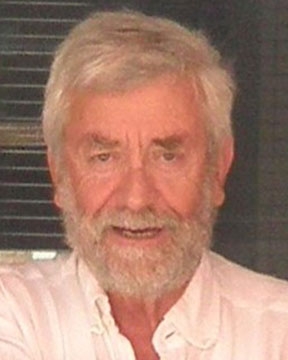Abstract:
The work on my D.Sc thesis consisted in a study of the textural and structural developments in the thermal treatments of Aluminum Phosphate hydrated gels. Immediately after, in my fist postdoc I discovered the interconversion between CrO2 & CrOOH in different atmospheres and I also performed a textural analysis that was followed in ulterior thesis back in Spain where we did study the diffusion coefficient of H in this process. A plethora of oxyhydroxides & hydroxides was than prepared and deeply studied structurally and microstructurally. In my second postdoc we looked at extended defects in CrO2 and found a new family of Crystallographic Shear (CS) Phases, a subject of great interest at the time -mid 70’s.; simultaneously we made a deep study by means of Photoelectron Spectroscopy, in the first equipment available commercially, of chromium oxides and confirmed Goodenough Model for Rutile type dioxides.
Back to Spain in my then starting research group (1973-4), we dedicated our efforts, mostly, but not exclusively, to the synthesis and characterization (structure, microstructure, electric, magnetic, thermal) properties we did extend the studies on CS in various system and the structure/properties relations and its evolution with temperature in TM oxides obtained at RP/HT and, specially at HP & HT in the HP-Laboratory that we did set up -first one in Spain and one of the very few in Europe by then- more than 15 external groups have benefitted of this innovative laboratory. Also, the deep microstructural and spectroscopic characterization was performed in the Electron Microscopy “Luis Bru Center” that I founded at UCM. Work on Perovskites followed and we did publish the first Spanish paper in Physical Sciences in Nature (1977) concerning extended defects in bulk SrTiO3 and later on its surface (SS Sciences 2009).
Continuing on perovskite related work we did launch an extensive collaboration wit three French laboratories: Two in Grenoble and one in Bordeaux, where we did introduce the electron microscopy and diffraction techniques. In this last case, we demonstrated the phenomenon of three-dimensional microdomains associated to non-stoichiometry associated to Red-Ox processes in Ca-La Ferrites.
In late 1986, the extraordinary phenomenon of HTSC, was discovered and we were the first group in Spain to obtain YBCO derived materials, such as REBa2Cu3O7-x (Solid State Comm 1987) still the Highest Tc (=96.5 K in the case Re <> Sm) for an YBCO superconductor. Shortly after we did prepare the whole family with most of the Rare Earths and distributed samples of the in various laboratories, including the one of Cardona in Stuttgart¡
For its part in Grenoble, we had a verry strong collaboration in those HTSC cuprates in which we established the existence of the “intermediate phase” Y2Ba4Cu6O13 (Solid State.Comm.65, 283-6, (81988/1/1) and obtained “A new family of cupro-carbonates” (Physica C, 1-2, 52-6(1994) & Physica C,235-240, 975-6 (1994). Which still displays the High Tc record for non-toxic materials:117K at room pressure.
On the other hand, in Madrid, our work has also demonstrated a novel Red/Ox mechanism in the oxidation –and concomitantly a very marked increase in Tc- of cuprates having two different transition metals: Mo0.3Cu0.7Sr2RECu2O7+x (Dalton Transactions: 44(23) 10795- 805(2015)).
A few additional examples of our more recent work in superconducting and other materials will be presented in the lecture.
|

